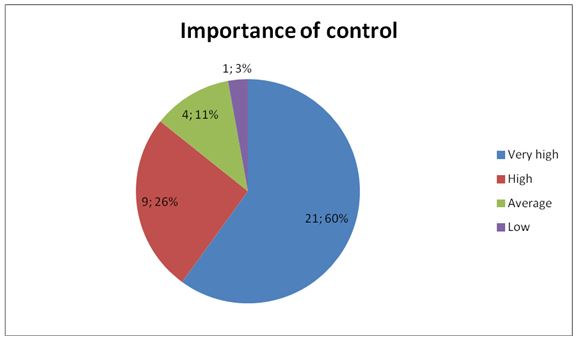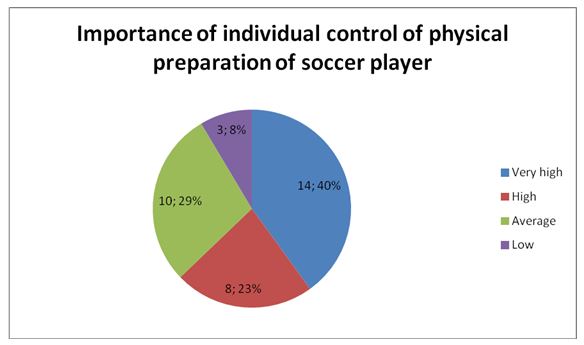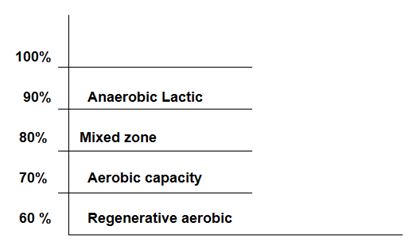Introduction
Soccer is one of the most attractive team sports worldwide for fans and
enthusiasts of the sport (Portet, 2011). Mostly, this is due to the increase of
professional soccer in all continents, as it is affirmed by Gómez, & Opazo
(2007), and among other additional aspects, it has become a show with which many
communities identify themselves (Antezana, 2003; González, 2003; Pimenta, 2003;
Villena, 2013; Rodríguez, 2016).
The evolution of this sport registered a transformation inside the process of
approximation, displacement and conflict in its trajectory, as it is affirmed by
Roldán (2015), as a selective British practice until its extension and
integration to the collective imagination. Considering that fact and since
soccer is a mass sport, both ideology and politics have had influence on it
(Sebreli, 1981; Vinnai, 2003; Kennedy, & Kennedy, 2013; Dorsey, &
Sebastian, 2016); therefore, the analysis of the motivations to its practice
have been a recurrent topic in theoretical and scientific studies (González,
Sánchez, & Márquez, 2000; Folgar, Boubeta, Cristobal, & Zamácola,
2012; Muñoz, Sánchez, & Litago, 2015).
Inside the sport training process there are trends that mark the training
directions (Calero, 2013; González & Calero, 2014), an aspect that favors
the improvement of the sport training (Calero, 2014a,b), which in the case of
soccer they happen to be very well studied and defended, such as the research
studies related to the different components of the athlete preparation (Calero,
& González, 2015), where stand out the evaluation of the physical condition
(Carling, 2013; Irigoyen, Huerta, Alvira, Benito, & Los Arcos, 2014;
Franco-Márquez, & al, 2015; Smith, Coutts, Merlini, Deprez, Lenoir, &
Marcora, 2016), the psychological preparation (Diment, 2014; Giske, &
Johansen, 2016), communication (Cappe, 2016; Viciana, Mayorga, Ruiz, &
Blanco, 2016), the planning of the specific training (Váczi, Tollár, Meszler,
Juhász, & Karsai, 2013; Morgans, Orme, Anderson, & Drust, 2014; Gallo,
Cormack, Gabbett, Williams, & Lorenzen, 2015), the teaching-learning process
(Abad, Giménez, Robles, & Rodríguez, 2011; Verdú, Damiano, Carbonell,
& Turpin, 2015), the technical and tactical performance (Lapresa, Arana,
Ugarte, & Garzón, 2009; Leite, 2013; Orozco, Sierra, & Pérez, 2015) or
soccer as a recreational component (Gómez, Valero, & Gutiérrez, 2007;
Vasconcellos, Seabra, Cunha, Montenegro, Penha, Bouskela, E. et al., 2016),
among others.
As part of the comprehensive preparation process of the athlete, the performance
control plays an essential role before, during and after the beginning of the
process (Calero, Fernández, & Fernández, 2008; Butler, Southers, Gorman,
Kiesel, & Plisky, 2012; Nawabi, Cro, Hamid, & Williams, 2014; Barroso,
Calero & Sánchez, 2015; Barroso, Barroso, Sánchez, Calero, Recalde,
Montero, & Delgado, 2015).
Such control of the performance is revealed in the application of tests to
evaluate the sport performance, which are expressed and divided according to the
component of the preparation of the athlete under study (physical, technical,
tactical, theoretical, and psychological).
Physical preparation is a process oriented towards the strengthening of the
organs and systems (Freeman, 2013; Calero & González, 2015), to an increase
of their functional possibilities and to the development of motor qualities
(strength, speed, resistance, flexibility and agility (Ozolin, 1988). The
aforementioned statement matches the criteria of classics such as Matvéev
(1983) and contemporary ones like Platonov (2001).
For the specific case of the assessment tests of the physical performance of the
soccer player, the scientific literature tackles several tests that essentially
validate their strategic value for the diagnosis in the sport initiation (Haro,
Ortega, Cerezo, & Contreras, 2007). Nevertheless, the physical preparation
of the player is a continuous process during the active life of the athlete
(Bosco, & Vila, 1991; Salinero, González, Ruíz, D., Vicén, García,
Rodríguez, & Cruz, 2016).
Among the numerous physical tests to valuate the performance of the soccer
placer at any age, it is vital to select those that according to the need and
possibility of the coach, allow having higher indicators of reliability,
validity and economy.
Since control is an essential component in any direction process, it is vital to
develop a study that allows a theoretical update of different assessment tests
for the specific performance of the soccer player, as a basis for a subsequent
design of a group of tests for the individual control of the physical
preparation of the school soccer player (13-15).
Characterization
of the physical abilities in soccer
Soccer is a sport that requires the determining participation of various
physical abilities during its development. This is due to the time dedicated to
the sport, since a game lasts 90 minutes and is played in two halves of 45
minutes with 15-minute half-time break. During the game, several physical
abilities must be displayed according to the action or function of each player’s
task (defend, attack, get away, etc.) since soccer is a very variable sport in
terms of motor action. It consists of 11 players, plus a referee, who officiates
the match, based on the FIFA regulations and keeps order on the pitch.
Several authors approach the characteristics of the sport according to their
studies and to the activities of the players during the game. Some of the
characteristics of soccer are described below:
-
Official
time: 90 minutes
-
Real
time: 52 - 60 minutes
-
Distance
covered: 5 - 10 Km.
-
Jog:
4 - 10 km.
-
Sprint:
1.1 - 2 km.
-
¾
speed race: 2.1 - 1.3 km.
-
March
or jog: 2.1 - 3 km.
-
Contacts
with the ball: 70 - 130 (freq.)
-
Struggle
for the ball actions: 10 - 30 (freq.)
-
Jumps:
15 - 20 (freq.)
-
Ball
control time: 1.30 - 3.13 (minutes)
-
Average
pulse: 160 – 190 p/m
-
Body
weight loss: 2 – 3 kg.
-
Increase
of the body temperature: 4 degrees
-
Work
with the oxygen debt: 62 – 70 %
-
Hours
to achieve recovery: 30 hrs.
-
Lactate:
6 – 10 mm
In one of the latest and more effective studies carried out in this sport, ESPN
TV Network, proved that a professional soccer player, during the 90 minutes of
the game, running constantly, covered nearly 9-11 kilometres, at a high speed,
showing that one of the predominant abilities in this sport is the resistance to
speed, although it cannot be forgotten that soccer is a sport of multiple
skills, since sometimes there are other skills which are defining, for example
shots on goal that score a goal, or a head shot. However, and according to
Borbón & Alvarado (2013) and Martín, Muela, Recio, Escaño, Escaño,
Gisbert et al. (2013) resistance to speed is what predominates in present day
soccer, because during the entire match the athlete keeps running at a high
velocity and without the necessary time to achieve an appropriate recovery.
Bases
of the physical abilities displayed in soccer
-
Resistance
capacity: is the capacity to do a prolonged work with the required intensity
level, fighting against the fatigue process Ozolin (1988). The
manifestations of resistance in soccer imply the aerobic energy, the
anaerobic, and the alactic and lactic anaerobic.
-
Strength
Capacity: according to Calero & González (2015, p. 28) is the capacity
of the muscle to apply tension against resistance. The main manifestations
of this capacity in a soccer player are maximum strength, quick strength,
explosive strength, resistance strength.
-
Speed
capacity: it is the quotient between the space covered and the time used in
covering it. It can be defined as a complex ability derived from a group of
functional properties (force and coordination) that favors regulation based
on the temporal parameters existing. The activation of the cognitive and
functional processes of the athlete causes an optimal motor response. Calero
& González (2015, p. 46). The manifestations of speed in soccer are
related to velocity of reaction, execution, acceleration, displacement,
maximum velocity and resistance velocity.
-
Flexibility
capacity: understood as the possibility to move body segments with great
angular amplitude (León, Calero & Chávez, 2014, p. 93). Since there
are two types of flexibility (passive and active) these are comprehensively
complemented.
Material
and methods
As a preliminary diagnosis, 35 coaches of the province of Pichincha, Republic of
Ecuador were surveyed, and the goal was to know the main aspects of the planning
for the physical preparation of soccer players aged 13-15 years. The coaches
were selected based on their experience (10 years or more of work in the school
category studied). To tabulate the data and obtain the central trend statistics,
it was used Microsoft Excel 2013; and Microsoft Graph for the design of
graphics.
Results
and discussion
The questions and answers of the survey are described below.
1.
Do you plan the physical preparation process of the soccer player?
-
The
answers demonstrated, at least in theory, that 100 percent of the coaches
had some kind of program for the physical preparation of the soccer
player. This proves, as it is affirmed by Carling (2013); Irigoyen,
Huerta, Alvira, Benito & Los Arcos (2014); Franco-Márquez et al
(2015); Smith, Coutts, Merlini, Deprez, Lenoir & Marcora (2016) that
the control and planning of the physical preparation is essential in the
direction of the sport training process.
2.
Do you plan the sport training, and specifically the physical preparation of
the athlete based on the principle of individualization?
-
The
preliminary study of the training plans of the coaches surveyed, brought
about that only four subjects (11,43%) detailed some components of the
athlete’s training in their plans based on the individualization
principle. In that regard, it coincides with Calero (2013), González
& Calero (2014) and Calero (2014a,b) that in the direction process of
the sport training it is necessary to plan the guidelines, since it is one
of the most relevant trends worldwide, an aspect that has incidence on the
improvement of the training in order to achieve a high and long- term
performance in a short period of time.
3.
Do you control the training plans and the evolution of the loads of the sport
training?
-
In
theory, and in an unreliable way, 100 % of the coaches surveyed stated
that they controlled the parameters and had all the necessary knowledge
about time periods and implementation of the principles of soccer
training.
4.
Do you make regular controls (at least every two months) to evaluate the
effectiveness of the work carried out with the athletes?
-
The
responses proved that only 37.14% (13 subjects) of the coaches carried out
pertinent controls of the athlete preparation, at least every two months.
It coincides with authors Cappe (2016); Viciana, Mayorga, Ruiz &
Blanco (2016) that the planning of the specific training of the soccer
players, and of all sports, need systematic controls to test the effects
of the sport loads in athletes, an aspect that necessarily requires a
training strategy or making adjustments.
5.
What do you think is the importance of controlling the physical preparation of
the soccer player aged 13-15 years?




